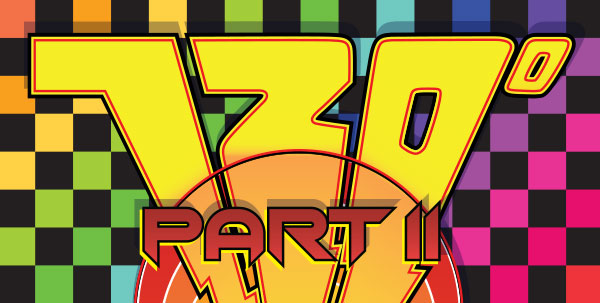
In the previous blog I talked a little big about the look, and feel of my 720° sequel. So let’s expand on it a little bit more. The engine would be in 3D, but presented in an isometric format. The bold use of colors, and patterns would help give the appearance that it is still a sprite-based classic. I would go out of my way to include dozens of Easter eggs, and callbacks to skate game, and arcade history. Not-so-obvious things like putting the Atari symbol as a skateable feature in a park that looks like it was based on a Marble Madness stage. Then there would be more obvious things, like a bike riding kid that looks a lot like the Paperboy, and sci-fi movie billboards for films based on Asteroids, and Missile Command. Well, you start to get the idea...
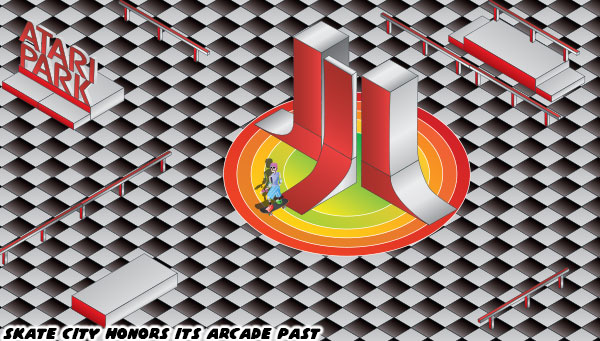
Then there’s the placement of the camera to consider. Modern consoles are capable of putting more information on screen. The resolution on the original Atari hardware for 720° was 512 x 384, at a 4:3 ratio, by comparison the Xbox One S, and newer console resolutions goes up to 3,840 x 2,160 (4K), at a 16:9 ratio. This means that proportionally the game would appear to have twice the screen space. It would be easier to see potential lines connecting objects, and gaps in Skate City. The camera wouldn’t be fixed at a specific distance however. It would zoom in to let you see more detail, especially during contest runs. This would come in handy so you don’t lose your character especially on ramps, or pipes that show transparency.
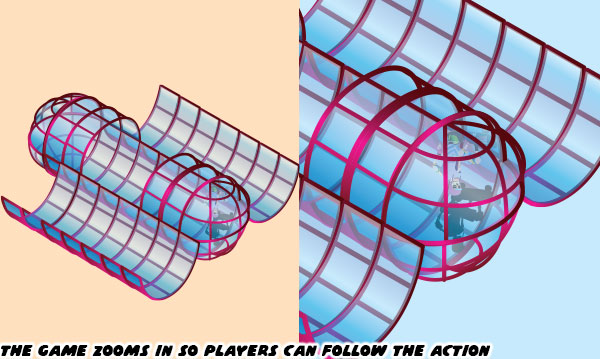
I thought the main character in my 720° sequel should be a skeleton kid. Skeletons, and skateboarding have been attached at the hip for decades. I talked earlier about the influence of artist Vernon Courtlandt Johnson (VCJ) on skateboarding graphics. His work for Powell Peralta cemented the connection to skeletons, and skateboarding. Even the products that Powell created used the motif. The wheels from the company were called “Bones” because of their color. The construction of a fiberglass-reinforced deck was called “Bonelite.” The plastic rails that they put under their boards so they could slide further were called Rib-Bones. The companies first sponsored skater was Ray “Bones"Rodriguez. VCJ’s first skate graphic was for Ray. Powell couldn’t escape their destiny even if they tried. This was partially the reason why I went with a skeleton lead, instead of a regular human for the sequel.
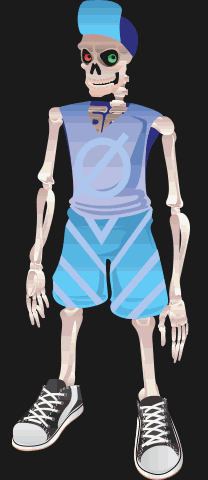
The idea behind going with a skeleton actually has to do with creating a truly neutral avatar. This character is without gender, or race. They are entirely open to interpretation. It could be a white boy in a dress, it could be a black girl with a mohawk. It is entirely up to the player to make the character their own. Of course I'm presenting outfits, colors, and patterns that would have fit in with the '80s aesthetic. Having the ability to change outfits, and shoes is something we take for granted today, but was impossible in the early days of the arcade. The reason I selected the default colors, logo, and costume for the novice was a nod to the arcade original. This character is an amalgamation of the NPC kid found in the parks, as well as the Bones roller skater.
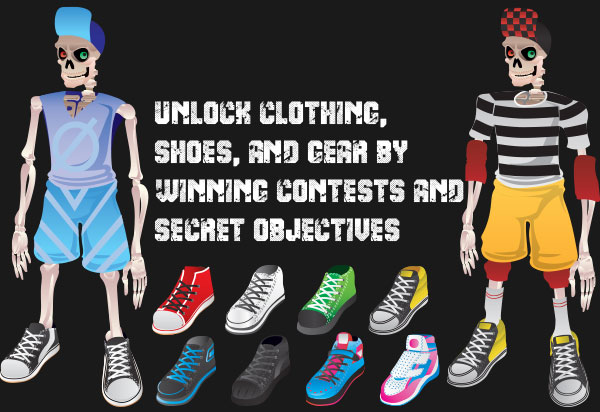
When a player begins the game they start as a Novice. All of the controls in the game are unlocked from the get-go. If I had my way the hints would be disabled from the beginning. There would be no tutorial. Just as in real skating it is up to the player to figure out what they can, and can’t do as they push around Skate City. Getting close to a ledge, or rail while performing a no-comply or ollie can result in an automatic grind, or board slide. The distance of the slide depends on the speed of the character as always, but also on how many times they’ve tried the trick. Players that repeatedly ollie, or grind start to notice that their character jumps a little bit higher, or goes a little bit further on a grind before automatically popping off. Repetition of tricks ensures that they will be landed successfully. Rails that appeared impossible to grind at the start of the game, seem less intimidating by the end. Just as in real life the more you try the tricks the easier they are to pull. The same goes for frontside, and backside spins.
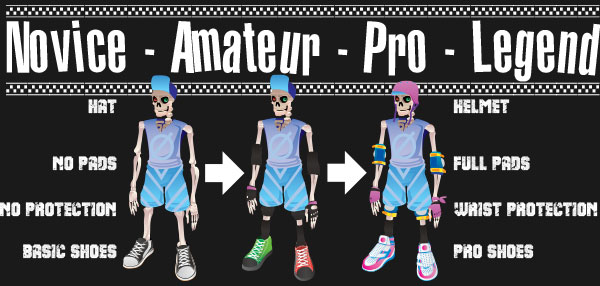
As the character gets greater stats they start to unlock items. At first these are aesthetic things. New clothes, and shoes. Eventually they become Amateur skaters, and start to get invited to contests. Some of the contests take place on parts of Skate City, but others take place in dedicated arenas. The more time the gamer puts into the game the greater the stats, and the greater the ability of their character. Pro rank, and eventually Legendary skaters can go faster, ollie higher, grind further, and spin more rotations than Ams. The game actually helps keep track of these things, and shows your progress. Even details like furthest rail grind, or number of tiles slid on a pool are saved for posterity. If a player finds winning a contest is too difficult then they can always work on leveling up before trying again. Yet if a player is constantly close to winning, but comes up just a hair short then the gear they unlock can help put them over. Earning the right gear, and putting them on the character boosts their stats during a contest. Ensuring that they spin a little bit faster, or stay balanced a bit longer.
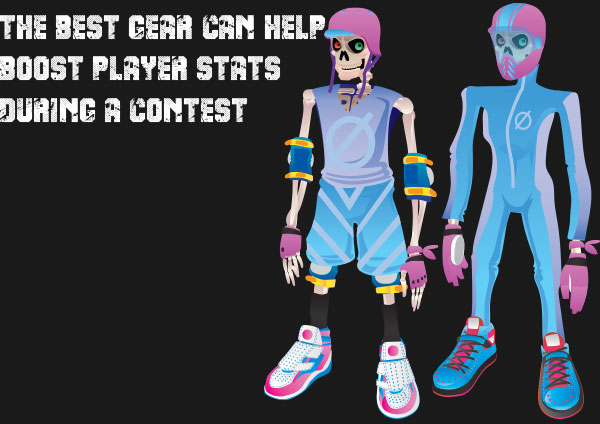
This focus on leveling up, and gear would apply to the skateboards in the game. Since the game pulls a heavy ‘80s aesthetic then the decks, wheels, and colors would be period correct as well. This means that boards would have very distinct shapes. In the ‘80s decks had a distinct nose, and tail. Modern skateboards are almost perfectly symmetrical “popsicle” shape. My sequel would allow players to not only unlock unique shapes, but also change things like the cut of the griptape, color, and even full graphics on it. Players would also be able to add pads, or rails under their deck so they could slide further, and faster. Again, all of these would be based on actual ‘80s skate technology.
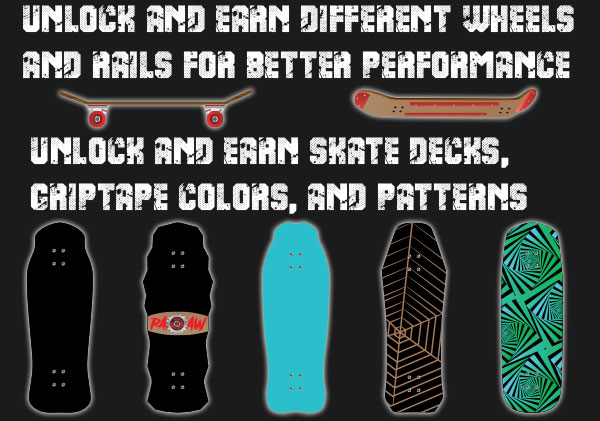
Being obsessive about skate history means that I would hide all sorts of Easter eggs in the game. For example I’d make the last two outfits you could unlock be the outfit worn by the kid in 720°, and an outfit inspired by the box art of Skate or Die, with Bionic Lester’s wild green hair. In my mind the avatar represents the spirit of skateboarding. They will go on skating, and inspiring future generations to skate well after I’m gone.
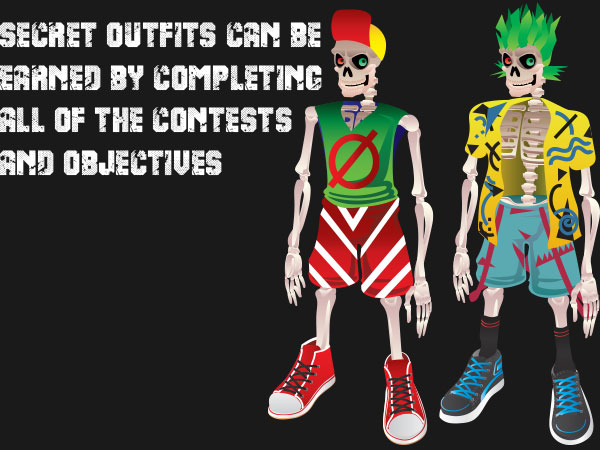
There’s so much more that I have planned for the sequel. I will spend more time fleshing out Skate City, and the new contests in the next blog. I hope to see you back for that. If you would like to sponsor me please visit my Patreon page and consider donating each month, even as little as $1 would help make better blogs and even podcasts!
No comments:
Post a Comment